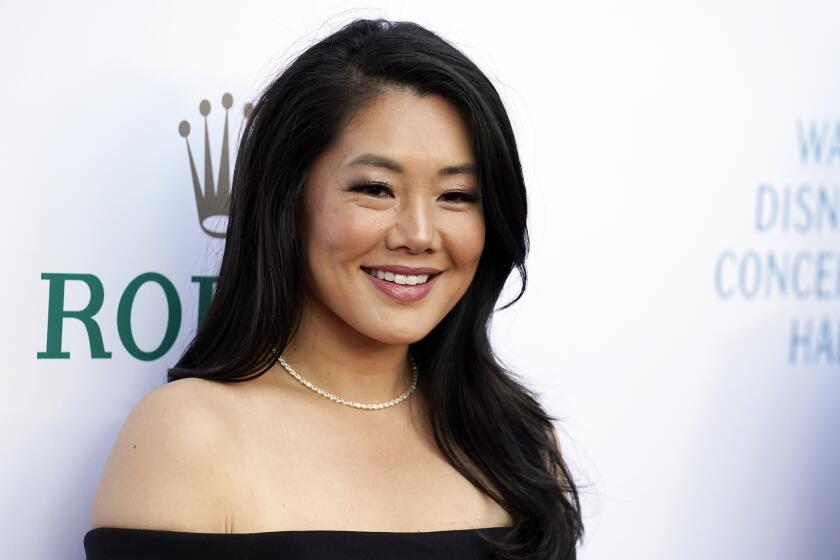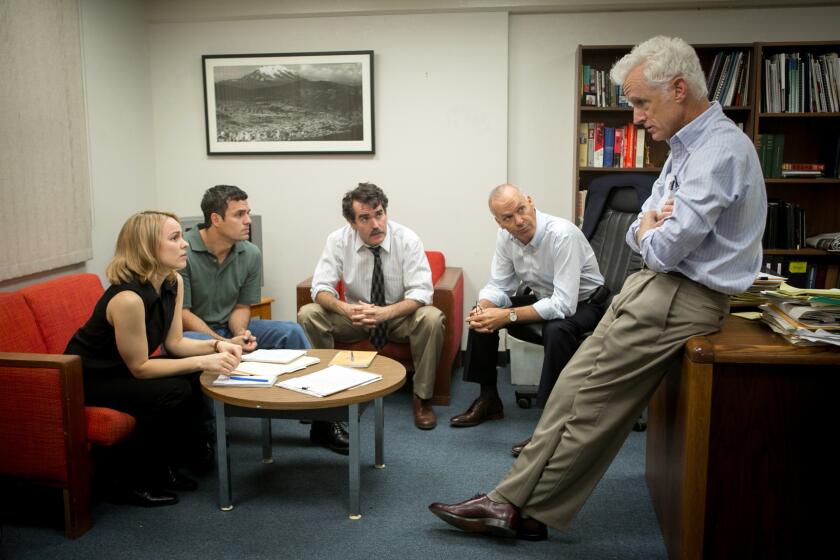Theaters show improvement
Robert Laemmle, who owns the largest chain of art-house movie theaters in Southern California, was eating lunch at a West Los Angeles restaurant recently when an elderly couple approached his table.
“You’re our salvation,” said Shirley Lewis, 79, gushing like a fan meeting a celebrity. “We don’t go anywhere else.”
Such reverence isn’t unusual from older couples, college students and other lovers of art-house fare, Laemmle said. For decades, the Los Angeles company presented alternatives to the Hollywood mainstream in theaters that were often off the beaten path and threadbare.
But lately, Laemmle Theatres has been going uptown. The chain has been attracting a new group of fans -- community planners, developers and powerful homeowner associations -- that has taken art houses from dusty afterthoughts to project anchors.
The theaters are in demand, not only for their highbrow offerings, but because they also attract an upscale, generally well-behaved crowd that can help set the tone for business developments.
“I never thought I’d see the day when they would be coming after us to put in theaters,” said Laemmle, 71, who has had an ownership stake in the family business since the early 1960s.
“It’s nice to be wanted.”
Laemmle (pronounced LEM-lee) art houses have opened or are about to open in several locales.
Pasadena wanted an art-house multiplex so badly for its Playhouse District -- named for the historic Pasadena Playhouse -- that it not only waived expensive zoning requirements but also bought adjacent land to put in a walkway. The theater opened in 1999 and now accounts for 20% of the chain’s total sales.
For a massive downtown renovation project in Claremont, the city specified in its developer agreement that a multiplex to be included “be operated primarily as an independent and arts cinema.” Now under construction, the theater is scheduled to open this summer.
And in North Hollywood, a seven-screen theater will be part of a recently announced $100- million addition to the NoHo Commons development.
The Laemmle chain is not the only one to benefit from the newfound attractiveness of art houses. In West Los Angeles, a renovation project at the Westside Pavilion mall includes a 12-screen multiplex to be operated by Landmark Theatres, a nationwide chain owned by Internet billionaire Mark Cuban and partner Todd Wagner that often features independent and foreign films.
That project -- scheduled to open in June -- required a zoning change to include a theater. Randy Brant, head of development for mall owner Macerich Co., said approval for the change probably would have been impossible to achieve if the proposed theater were to show standard Hollywood flicks.
“The homeowners associations in that area are very actively concerned and vociferous,” Brant said. “They know their city council people and they visit them often.
“They let us know they wanted a theater that showed art and independent films.”
For the Laemmle chain, which last year had nearly $20 million in sales at its nine theaters and booking fees from six others, the newfound acceptance as a neighborhood enhancement takes the company back to its roots.
In 1938, Laemmle’s father, Max, and uncle Kurt bought their first movie theater located in the Highland Park neighborhood northeast of downtown. (Carl Laemmle, the founder of Universal Pictures, was a second cousin to the two men.) In this Golden Age of Hollywood, neighborhood theaters were a key component in the exhibition system and by the late 1940s the brothers had four more.
But competition from TV hit these local theaters hard and by the time Robert joined the family company, the chain had shrunk back to one theater.
Max Laemmle bought out his brother and began programming mostly foreign films that appealed to an intellectual crowd. “My father loved the arts,” Laemmle said, “and we were looking for a niche.”
Because of competition from more prestigious area theaters that had first dibs on foreign imports, they further specialized by offering mini-festivals.
The creative programming was enough of a success to allow them to expand to other theaters. In the late 1960s they also caught a break when several of their competitors shifted to a different genre -- pornography. It only increased with the release of “Deep Throat” in 1972.
“These theaters realized they could make a lot more money on these films,” Laemmle said.
Laemmle was able to attract more A-list foreign films, and the chain kept expanding. But many of the acquisitions were castoffs at a time when multiplexes were coming into vogue. Some of the Laemmle venues were large, drafty and aging.
In some locales, such as Santa Monica and in downtown Los Angeles, the company built multiplex theaters where it sometimes mixed first-run titles with art-house fare. But in all cases, the theaters were leased.
The chance to own didn’t arrive until the Pasadena Playhouse District project.
The district is east of the revived, highly popular Old Town area that has numerous upscale chain stores. Merchants in the artsy district wanted to share in the success, but remain a more quiet enclave. “They wanted to distinguish themselves as a destination,” said John Andrews, the city’s redevelopment director.
The spot for a theater was next to Vroman’s Bookstore, the area’s largest independent bookstore. Laemmle was willing to build there, but not without concessions.
Among other matters, the city waived a zoning requirement that would have forced the company to establish extra parking near the new theater.
But the venue’s success is derived not only from local fans of art-house movies, but also because there is relatively little competition, said Robert’s son, Greg, who runs day-to-day operations and is heir apparent.
“It’s just movie economics,” said Greg, 41. “With little competition, we can get films like ‘The Queen’ that are so popular.”
The Claremont project has been under discussion since the late 1990s. “We polled people here about what they wanted in the project, and time and time again they told us they wanted this kind of movie theater,” said Brian Desatnik of the Claremont Redevelopment Agency.
In the midst of its greater acceptance, the chain one by one dropped its older, single-screen theaters. Although it books films into single-screen theaters, the only one it still operates is the Royal in West L.A. The offices of the company, which has 21 full-time employees, are above it.
The expansion is reminiscent of that of his father and uncle in the 1940s before they had to drastically cut back. And Laemmle knows a similar situation could play out.
“There is always the worry that a new technology could again impact the movie industry,” he said.
Just ask the Lewises, the loyal film-going couple who approached him in the restaurant.
“We see a movie at least once a week,” said Gershon Lewis, 82.
But they also are watching more foreign movies at home. “Now,” Lewis said, “we have Netflix.”
More to Read
The biggest entertainment stories
Get our big stories about Hollywood, film, television, music, arts, culture and more right in your inbox as soon as they publish.
You may occasionally receive promotional content from the Los Angeles Times.







